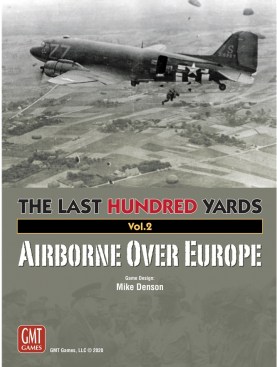The introduction of airborne units to the LHY series raised an interesting question: What was important to model Airborne units during WWII? Essentially, the challenge was how to model the difference between these elite units and the regular units depicted in LHY. We asked some military experts and they cited that an important distinction is that the elite unit selection process identifies people with a high appetite for risk and a penchant for action. That makes them more likely to get up and do something (for example: have initiative, recover under stress, provide the flanking effort, provide squad and platoon leadership, etc.). Elite unit training is therefore more demanding of such people and intentionally designed to produce esprit de corps and to reinforce their risk-tolerance and penchant for action.
How are these characteristics of elite units translated into the game? Typically, the first thought is that because the units are elite, they should have a better Small Arms (firepower) and Cohesion values than regular infantry. But this is not necessarily true. In the case of the US Airborne –– they used the same weapons (i.e., M1 Garand) and it’s is doubtful they were any better shots than regular units. Therefore, it is hard to justify an increase in their small arms value. As for cohesion, disruption of a unit in the LHY does not mean it panics or routs but instead, when under heavy fire, a unit will “go to ground“ and is temporarily out of action until it recovers (i.e., gets back in the fight). Regular or elite units, in the interest of self-preservation, will both go to ground when under fire. From this standpoint, it was hard to justify increasing the small arms and cohesion values of Elite units. As a result, players will notice that the Small Arms and Cohesion values of both elite and regular units remain basically the same.
So, how do we model the differences that make elite units ‘special’ in the LHY? The following allowances, although subtle, better model the intangibles in the selection, training, and performance of individuals for elite units in combat.
- Leadership: Elite platoon leaders have a Cohesion value of 7 and, as a result, have a greater impact on the effectiveness of their subordinate units under fire.
- Initiative: Forces that have elite units, in whole or in part, will likely have an enhanced Initiative modifier.
- Initiative at the Squad Level: Unlike regular units, Elite units that are disrupted can conduct a Limited Reaction to Recover after any enemy Call for Reaction. This can occur regardless of whether or not they observe an enemy action, or are stacked with, or adjacent to if in open terrain or on a road, their platoon leader. [This reflects the superior training and experience of the NCOs at the squad level]
- Coordination: Elite companies receive a favorable Coordination DRM of +3. This means that Elite Companies will successfully achieve Coordination 60% of the time vs 30% for regular units. This substantially increases the ability of elite units envelop the enemy during in an Assault. This reflects the greater emphasis on the training, coordination and teamwork of elite units.
- Esprit De Corps: Elite units receive a favorable Recovery DRM when attempting Recovery and therefore increasing a unit’s chance of Recovery. In addition, Elite units Rally on a die roll ≤ 2, and ≤ 3 if assisted by their platoon leader. This means they will return to action quicker than regular units.
In summary, you will find that the elite units in LHY are really tough and will typically perform best in difficult situations.








